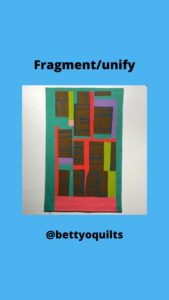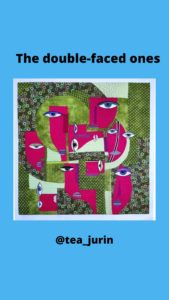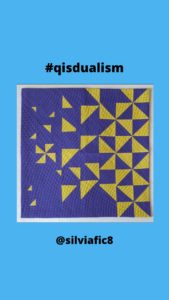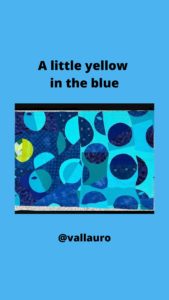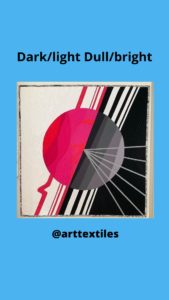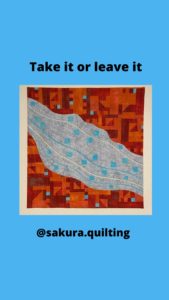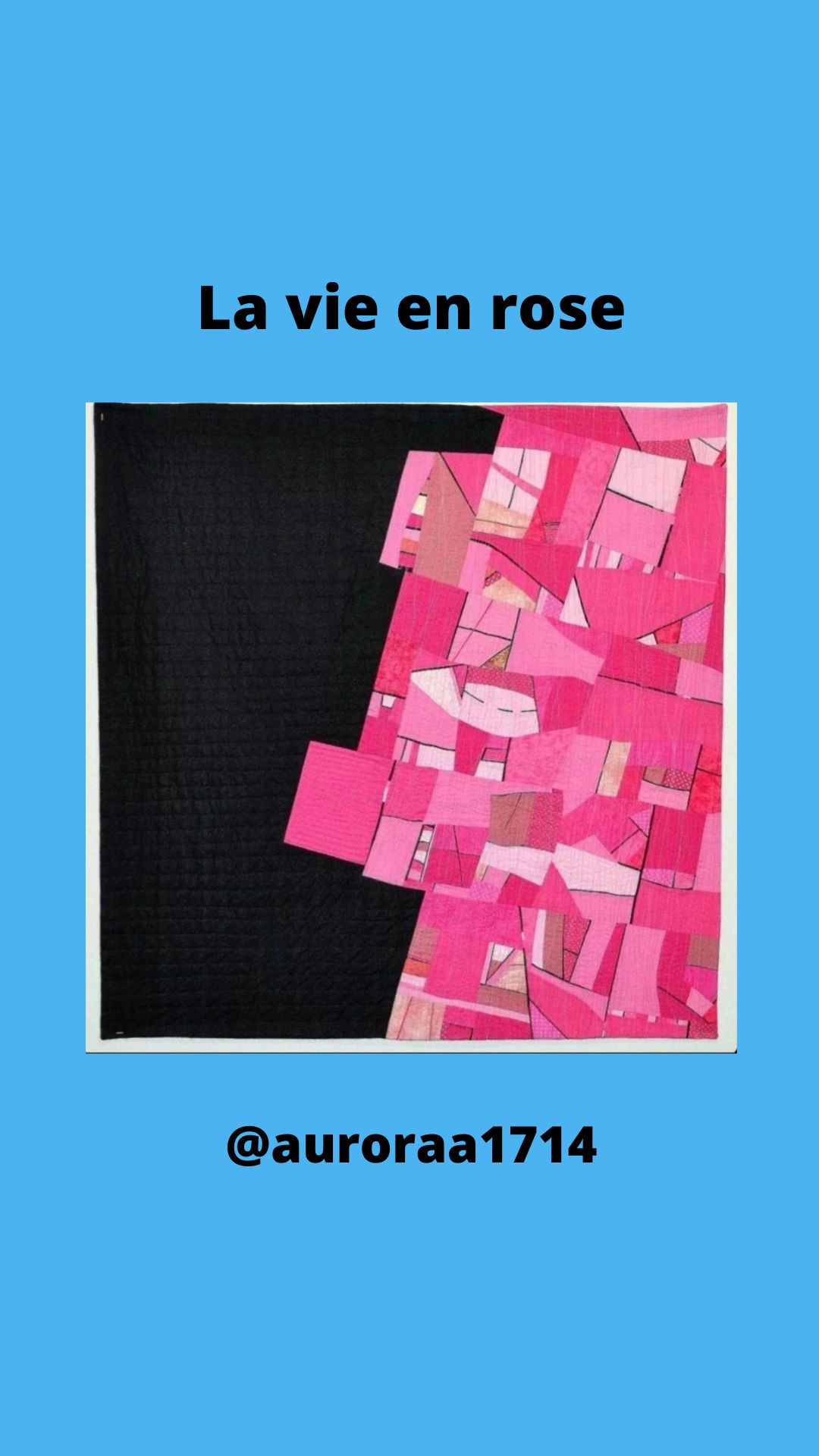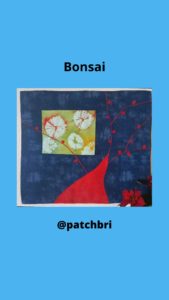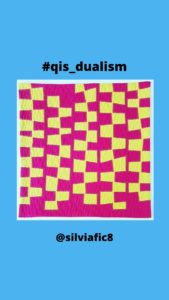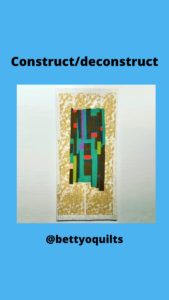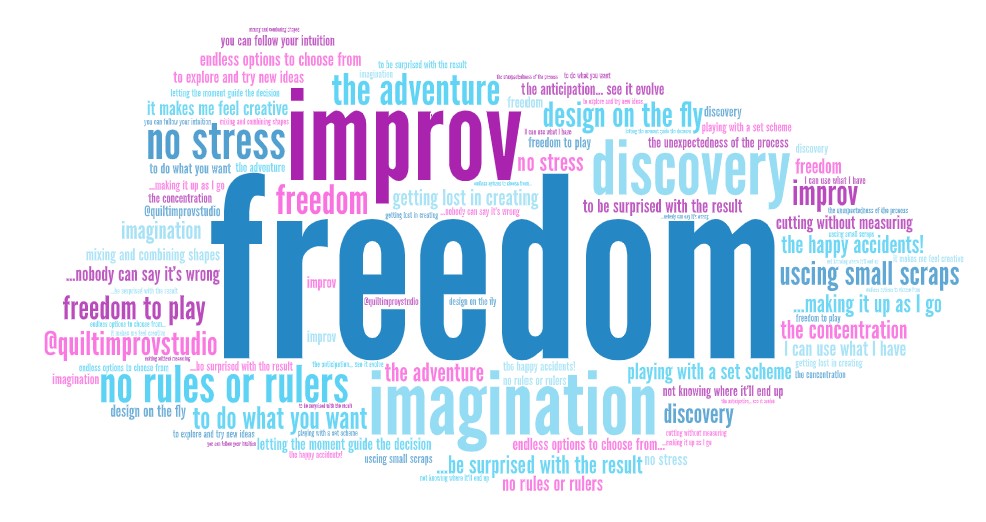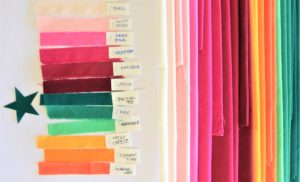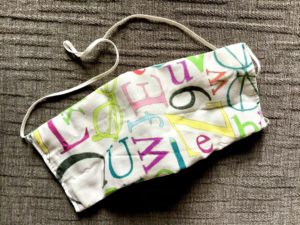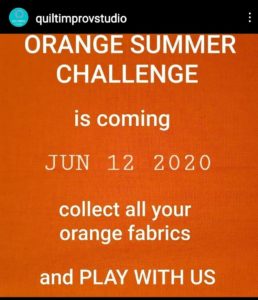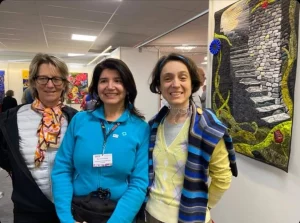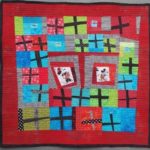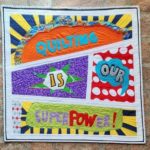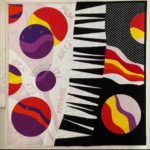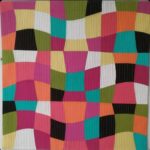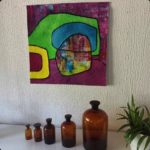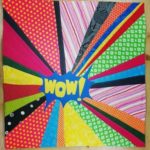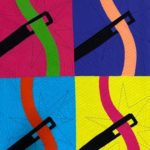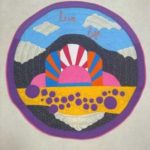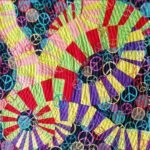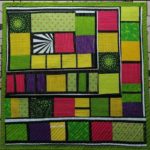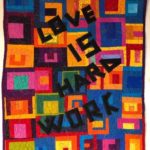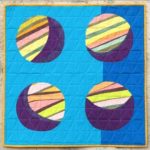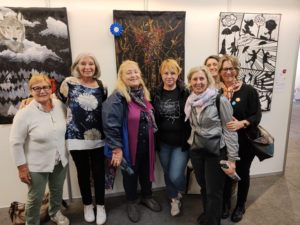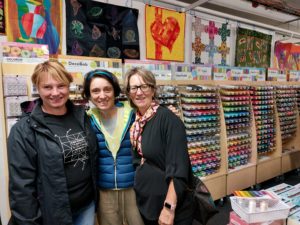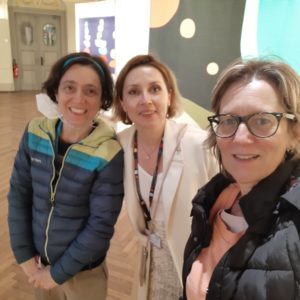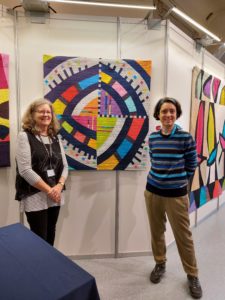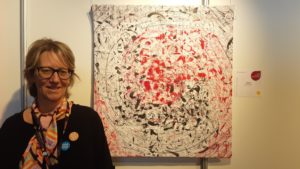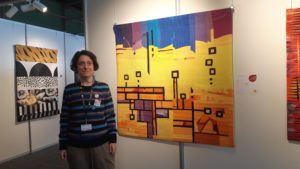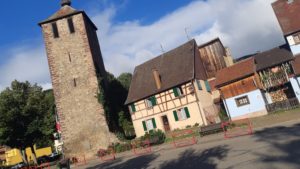The game based on the theme of dualism is now completed and the works made by participants are stunning!
As usual, we asked some questions to the quilters who completed their work for the dualism challenge. We unexpectedly found some common understanding of what happens during our games, even if each of us is unique and improvisationally interprets the prompt in their own way.
We asked: “The theme dualism has a thousand options, how did you choose the one you made?”
@bettyoquilts wrote: “How did I choose? I spent some time thinking about the many options to express the dualism theme. I realized that the act of quilting itself was an expression of dualism through the use of fragments joined and unified through the process of quilt making. This guided my construction of the quilt top and decision to use an all over quilting design.”
@teajurin said: “Dualism immediately brought to my mind the double-faced behavior of numerous people with whom I have interacted during my many years on this planet.”
@silviafic8 explained: “I started thinking of two complementary colours, later I added a flow of order versus disorder.”
@vallauro thought of the night, the silence, and, as a contrast, the feeling of finally finding hope and sun in a remote corner.
@arttextiles included several themes: “This one I based on personal biorhythms, the influence of day/night, high/low frequencies, light/dark and the realisation of a dualistic universe.”
@sakura.quilting developed the composition in this way: “Take it or leave it, the title of my Quilt, just appeared in my mind before I could even imagine what the quilt would look like. It’s the first time this has happened to me. I feel I didn’t even have to decide about different options in the Dualism theme. The image of the river came later and then the making of the Quilt started.”
Our games are participative, a common journey. How was the work in progress made by others, seen by our game participants?
@auroraa1714 explained: “I love how every quilter sees the theme in another way, another perspective.”
@teajurin added: “Other quilters’ works-in-progress showed me that my interpretation of dualism was fundamentally different from others’; mine was psychological whereas the majority considered opposing physical characteristics.”
@arttextiles wrote: “I am very happy to look and appreciate the interpretation of others when my own is cemented in my mind and I am absolutely amazed at the different quilt interpretations from the one brief; human creativity is amazing, isn’t it?”
We think that sewing in a group helps to improve. @morphea80 agrees: “When I see the process of other quilters in the challenges, I always learn a lot from it. Ideas are formed for the next projects. Sometimes I’m amazed how an idea came about in the first place and then was implemented. For me this process is very interesting.”
We start to have “frequent players”. What’s the effect for them?
For @arttextiles “This Duality Challenge was, in lots of ways, easier for me, as I tend to work on instincts and feelings when I am creating and the total freedom to interpret the brief.”
@patchbri had another impression: “This time it was more difficult for me than in the past games; still, I liked it: it was a different type of challenge”.
For @silviafic8 “improv started to feel more familiar to me, after many games”.
@arttextiles thinks that now her work is “more innovative and spontaneous”.
We agree: congratulations to all participants for the amazing quilts you can make and, as @bettyoquilts says about the results from the group, “the level of creativity is exciting”!
Thanks to all the quilters who replied to our questions, and to all the other makers who participated to our games, sometimes with more than one quilt! We invite you to review all the work in progress at #qisdualism Instagram page, and the improv quilts completed by the participants in the @quiltimprovstudio gallery.
